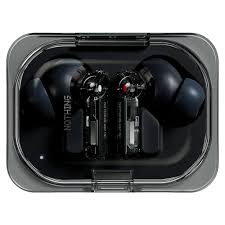Understanding SPL: The Importance of Sound Pressure Levels
Introduction to SPL
Sound Pressure Level (SPL) is a crucial concept in acoustics, referring to the pressure of sound in the air measured in decibels (dB). Understanding SPL is important across various industries, including music production, film, and environmental sound management. With the rapid development of audio technology and its integration into daily life, knowing about SPL can help individuals make informed decisions regarding sound exposure and audio quality.
The Basics of Sound Pressure Levels
SPL is defined as 20 times the logarithm to the base 10 of the ratio of a given sound pressure to a reference sound pressure (usually 20 µPa in air). It measures the intensity of sound as perceived by the human ear and provides valuable insight into the loudness of noise in different environments, ranging from concert halls to quiet residential areas.
Current Developments in SPL Research
Recent studies have focused on the impact of high SPL on human health. According to a report published by the World Health Organization (WHO), prolonged exposure to noise levels exceeding 70 dB can lead to hearing loss, stress, and sleep disturbances. This has prompted new guidelines on acceptable noise levels in public spaces and living environments.
Moreover, advancements in technology have allowed for improved sound monitoring systems that can accurately gauge SPL in real time. Initiatives by various governments and organisations aim to mitigate excessive noise pollution, thereby enhancing community well-being and environmental sustainability.
Applications of SPL in Various Fields
In music and entertainment, SPL is a critical factor in live performances and studio recordings. Sound engineers meticulously monitor SPL to ensure the music is delivered at an optimal level without causing discomfort to the audience. The entertainment industry has also seen the emergence of noise monitoring devices that signal technicians when SPL spikes above safe levels, protecting both performers and audiences.
In industrial settings, managing SPL is vital for maintaining employee health and productivity. Companies are adopting noise mitigation strategies, such as soundproofing and providing personal protective equipment, to comply with occupational safety regulations.
Conclusion
The significance of Sound Pressure Levels cannot be overstated, as they influence audio quality, human health, and environmental policies. As technology continues to evolve, understanding and managing SPL will be essential for enhancing our audio experiences while safeguarding public health. Moving forward, an increased emphasis on research and regulation surrounding SPL will likely emerge in response to rising concerns about noise pollution and its effects on well-being.









